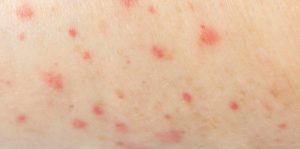
While the Covid-19 pandemic is still not over, the news is now abuzz with the outbreak of new viral fever in Kerala.
According to the reports, Kerala has recorded around 82 instances of ‘Tomato Flu’ or ‘Tomato fever’ so far in children under the age of 5 years. Most cases are in the Kollam district, but the flu is predicted to spread elsewhere and the numbers are predicted to increase. The exact cause of the sickness is still a mystery, which is why the Health Department of Kerala and the neighbouring states of Karnataka and Tamil Nadu are all on a high alert.
What is Tomato fever?
Tomato fever is an unexplained viral fever reported in the Indian state of Kerala. It gets its name from the large, bright red rashes on the body. As of now, it is unknown if the condition is a new viral fever or is a side effect of chikungunya or dengue virus infection.
What are the symptoms?
Tomato flu is characterized by:
– fever of unknown origin
– rashes that are large, bright red, often spherical
– skin irritation/blisters/skin discolouration
– ache/pain in the abdomen
– nausea, vomiting and diarrhoea
– cold and cough
– drowsiness and discomfort
– dehydration, which is most evident on the tongue of a child affected with the condition.
What are the preventive measures?
We have come a long way in reducing the burden of malaria in our country. One of the theories of the cause of this flu is reactivated dengue virus or chikungunya virus. Both tomato flu and malaria are mosquito vector-borne diseases; however, the mosquito species are different. Getting rid of Aedes aegyptii mosquitoes helps keep dengue, chikungunya, yellow fever and Zika virus at bay, while malaria can be tackled by keeping a check on Anopheles mosquitoes. Aedes aegyptii breed in clean, stagnant water, while Anopheles breed in dirty/sewage water. Improved sanitation has reduced the burden of malaria; however, overcrowded areas are infested by the Aedes species. Stagnant water in pots, tanks, tyres, tubes, flower pots, etc. should be removed every week at least to nip Aedes mosquitoes in the bud. Apart from vector control, preventing mosquito bites is of great importance, especially in children as their immunity is still underdeveloped.
What is the treatment?
Like most other viral diseases, tomato flu is also self-limiting and needs only symptomatic treatment. If a child shows any of the symptoms mentioned above, a doctor should be consulted. Dehydration is a known menace with this disease and a child suffering from tomato flu should be given plenty of fluids, along with complete rest.
Do not allow the child to scratch the blisters or rashes. A small number of patients have reported “worms” emerging from the boils; hence, maintaining proper cleanliness and hygiene is essential. The patient should be given a warm water bath. Avoiding close contact with the infected person is essential to prevent spread and caregivers should exert caution.
With these measures, we can combat this new public health threat with ease.
#NationalDengueDay
#tomatoflu
Source:

Dr. Mamta Lele- Pawara
(MD Ayurveda-Internal Medicine, CRAV-Kayachikitsa, MA Sanskrit)